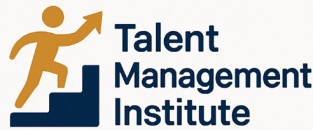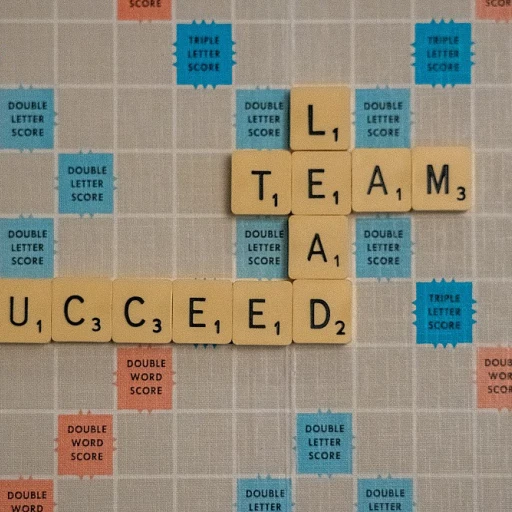What Does Team-Oriented Mean?
Defining a Team-Oriented Approach
In the business world, being team-oriented is more than just a buzzword; it describes a work style that emphasizes collaboration, trust, and mutual respect among team members. This orientation towards teamwork transcends individual ambitions, concentrating instead on collective objectives and shared success. For employees, this means a commitment to developing and employing strong communication and problem-solving skills. It involves not only expressing ideas clearly but also actively listening and valuing the input of others. This creates an environment where innovation flourishes, guided by a common goal that aligns with the company's mission. Team-oriented individuals naturally gravitate towards working harmoniously within a group. They exhibit a willingness to put the team first, facilitating improved camaraderie and trust. Such team players often find themselves acting as catalysts in the team building process, nurturing a culture of inclusivity and cooperation. Team-oriented culture is an extension of this mindset at the organizational level. A company's culture sets the tone for its employees, shaping how collaboration and communication occur within teams. Cultivating a workplace where the leadership style champions open dialogue and collective achievements fosters a supportive atmosphere wherein all employees can thrive. In essence, a team-oriented approach is the linchpin of a successful workplace, weaving together the threads of individual skills and strengths into a cohesive fabric. This leads to improved job satisfaction, heightened productivity, and, ultimately, a more resilient and adaptable organization. To explore more about enhancing team-oriented practices, check out these key talent management strategies.The Importance of Team-Oriented Culture in the Workplace
The Significance of Building a Collaborative Workforce
Creating a team-oriented culture within a workplace is not just a buzzword; it is an essential component for success. It involves crafting an environment where collaboration, trust, and open communication become the pillars supporting the work ecosystem. A company thrives when its team members actively engage and contribute to achieving a shared vision. A team-oriented culture emphasizes teamwork, which leads to increased productivity and innovation. When people work harmoniously, they feel motivated and valued, which in turn boosts morale. This ultimately creates a positive ripple effect throughout the organization. The presence of team-oriented employees can be a game-changer for any organization. These individuals are more likely to embrace teamwork and contribute effectively to a collective mission. They understand that working together towards a common goal is far more rewarding than isolated efforts. To foster a team culture, it is imperative to build trust among team members. Trust is the foundation that enables openness, free exchange of ideas, and collaborative efforts. By establishing trust, a company encourages its employees to voice opinions and take risks, driving innovation and problem-solving capabilities across all levels. Moreover, communication is the glue that holds a team together. Leaders should facilitate regular interactions where team members can share their thoughts and experiences. This not only improves relationships within the team but also enhances the overall efficiency of the workplace. Oriented leadership plays a crucial role in maintaining this culture. Leaders who exemplify team-oriented behavior inspire their teams to do the same, thereby reinforcing the values of collaboration and teamwork. They’re pivotal in providing the direction and support necessary to cultivate a team player mindset among all employees. Furthermore, a team-oriented culture benefits the company by promoting flexible problem-solving, better decision-making, and continuous learning. Through structured team-building exercises and training, companies can harness the potential of their workforce, enabling them to address challenges more effectively. An embedded team-oriented culture is indeed a competitive advantage, positioning businesses to navigate the complexities and demands of contemporary markets. Embracing this culture requires commitment from everyone involved, leaders and team players alike, to genuinely drive the company toward success.How to Identify Team-Oriented Individuals
Spotting Team Players Among Employees
Identifying individuals who are naturally inclined toward working collaboratively is pivotal in nurturing a team-oriented culture. Team-oriented employees thrive in environments where collaboration and communication are key. But how do you spot these individuals within your company? Here are some indicators:
- Communication Skills: Good team players are adept communicators. They listen actively, share ideas, and provide constructive feedback, making them essential to effective teamwork.
- Trustworthiness: Employees who build trust with their team members are more likely to collaborate effectively and contribute to a positive workplace environment.
- Collaboration: These individuals not only enjoy working with others but also actively seek collaborative solutions to problems, showcasing their ability to work towards a common goal.
- Positivity and Support: Team-oriented employees maintain a positive attitude and support their peers. Their willingness to assist others fosters a supportive team culture.
Employers can also utilize certain assessment tools during hiring or internal evaluations to identify these key traits. However, simply recognizing team-oriented individuals is not enough. Organizations should focus on developing and nurturing these skills further through targeted team building and training programs.
Developing Team-Oriented Skills in Employees
Developing Essential Skills for a Team-Oriented Workplace
Creating a team-oriented culture in any workplace isn't just about hiring team players—it's about fostering the skills necessary for effective teamwork. Developing these skills in employees can transform them from simply competent workers into valuable members of a harmonious and productive team. Here are some of the essential skills that can be nurtured:- Communication Skills: Clear communication is the backbone of effective teamwork. Management should encourage open dialogue, ensuring team members feel comfortable expressing ideas and concerns. Workshops and training sessions focusing on active listening and assertive communication can significantly improve team dynamics.
- Trust-Building: Trust between team members is critical for a team-oriented workplace. Leaders should cultivate an environment where trust can flourish by promoting transparency and reliability. Demonstrating trust in employees' capabilities encourages them to reciprocate, resulting in a stronger, more cohesive team.
- Problem-Solving Abilities: The ability to address challenges collaboratively is a hallmark of a strong team. Providing employees with opportunities to engage in team-building activities that replicate real-world problem-solving scenarios can develop these critical skills. Leaders should also emphasize the value of diverse perspectives in enhancing decision-making processes.
- Collaboration and Adaptability: As work dynamics evolve, so must a team’s ability to adapt. Employees should be encouraged to embrace flexibility and to appreciate team members’ unique contributions. Conducting regular team workshops can help maintain high levels of cooperation and adaptability within teams.







